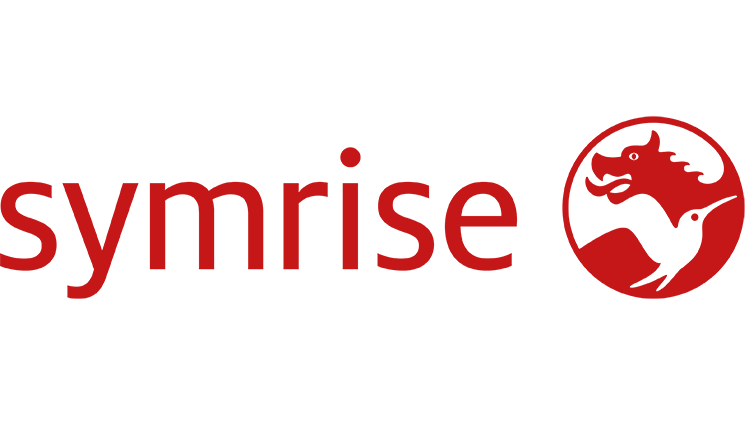Promotional Features
Insights into Creating Food & Beverages Gen Z Will Crave
Food and beverage manufacturers know they must look to the future when developing new products and flavors, and Gen Z is the future. So, the question isn’t, “Why does Gen Z matter as a consumer?” It’s more a case of “What does Gen Z want?” Manufacturers and distributors need an in-depth understanding of this influential demographic for the industry’s future success.
At Symrise, our goal is to help guide our customers on how to create craveable, successful food and beverage products for Gen Z. To accomplish this, Symrise conducted a comprehensive analysis of Gen Z consumer insights and attitudes, from buying behaviors, to how they respond to marketing, to their preferred food and beverage categories, ingredients, flavors, and concepts. The resulting Symrise Gen Z Initiative is designed to make the buying habits of this generation, born between the mid-1990s and the mid-2000s, clear and actionable for food scientists, marketing directors, and purchasing directors.
Gen Z Insights: More Buying Power Than Millennials
To answer the question, “Why does Gen Z matter as a consumer?” it’s best to start with their surprising buying power. As a generation, these young people have as much as $44 billion to spend.
How is that possible for young adults in this economy? The younger of this cohort are still in their teens and may be lucky to make money shoveling a driveway or caring for a neighbor’s cat. The older are still in school or are just getting established in their careers. But allowance adds up, and Gen Zers have grown up thrifty. The teens alone average around $16 a week from their parents for spending money. As they continue to mature and enter the workforce or start to advance in their careers, Gen Z is expected to be even more critical for the food and beverage industry. Research shows that Gen Z consumers spend more of their money on food – 20% of their income - than previous generations. And, more than 50% of Gen Z enjoys cooking and making their own food.
Generation Z Buying Habits
The most important of the Gen Z insights is that they are an entirely different kind of shopper compared to other generations. They are digital natives, meaning they are always connected and are extremely comfortable with life taking place online.
Just because Gen Z is comfortable in an omnichannel digital platform doesn’t mean they don’t want more traditional experiences when it comes to shopping. They prefer a combination of both digital and brick-and-mortar experiences. They are enamored with major technology and social media brands, but also enjoy in-person shopping.
Gen Z buying is often a two-part process, which requires a strategy for any food and beverage business targeting this demographic. Gen Z’s shopping habits usually start online. They’ll research and discover future purchases either through web browsing or social media. They may follow brands for a while, interacting with campaigns that market to Gen Z.
Then, they’ll make the majority of their purchases in a brick-and-mortar store. This is especially true of Gen Z women.
Gen Z buying habits stand out compared to older people:
- 62% of Gen Z shops in brick-and-mortar
- 50% of Millennials do
- 60% of all other generations do
The reason? Gen Z has a lower rate of credit card ownership than other generations. Instead of focusing on the ease of online ordering and delivery, this generation wants to purchase unique items made by unique brands. So, when it comes to marketing, creating an e-commerce, digital marketing strategy that drives in-store traffic is the way to go.
One way to do this is through some new digital platforms like Twitch and other video game streaming services, which have high engagement levels among Gen Z. Consider: 64% of boys aged 13 to 17 watch and play gaming content. These emerging platforms present significant opportunities for deepening a brand’s connection with this generation.
Marketing Tips for Gen Z Consumers
Wondering what we mean when we said that Gen Z is always connected? Research shows that 74% of this demographic spends five hours or more a day, every day, online. During that time, 46% will research items they desire on their mobile devices before purchasing.
When they consider buying something, be it Gen Z foods or Gen Z flavors, 63% prefer to get their information not from direct advertisements, but instead through endorsements by both real people and celebrities.
But don’t expect them to be patient as they collect information about everything from footwear to Gen Z beverages. Sixty percent of Gen Z shoppers won’t use apps or websites that load slowly or are difficult to navigate. Most will also hang up the phone if it’s not answered within 45 seconds.
Along with getting the technology right, marketers should also ensure they’re telling the story behind their product or service. Brands should:
- Make the world a better place
- Be inclusive of political beliefs and environmentalism
- Stay positive
- Honor celebrity qualities of activists
- Focus on realism and authenticity
- Not forget about price
Loyal to Ideas, Not Brands
As food and beverage industries learn about Gen Z flavor preferences, remember that this demographic doesn’t like to be put into boxes. Marketing should never be gendered; even Disney removed gender designations from Halloween costumes to meet the preferences of this important generation.
If you miss the mark, they’ll let you know. Thirty-four percent of Gen Z young adults have mocked brands in the past year for political reasons, compared to just 26% of Millennials. Don’t think they are brand loyal, either. They know that brands help shape the world, but only 50% are faithful to a particular brand, while 61% of older generations claim they are loyal to brands.
Bottom Line: Price and Inclusivity
Whether a marketer is designing the next Gen Z beverages or a new clothing line, it’s important to stay focused on price and inclusivity to attract this young generation. Products and services need to be affordable as well as available to anyone interested in purchasing them.
To succeed with Gen Z, brands must leverage social media, direct-to-consumer marketing, digital content, and in-store experiences. Following trends, such as vegetarianism, sustainability, and fun, will help businesses stay above the noise and earn the buying power of the future.
The Symrise Gen Z Initiative was developed through primary research: surveying Gen Z consumers on everything from buying behaviors to health and wellness to plant-based protein; third party data related to consumption, category preference, food service trends and flavor preferences across beverage, savory, and sweet categories; and continued outreach to Gen Z consumers. We welcome the opportunity to present the trends, insights, and opportunities we uncovered, along with customized concepts for your brands’ success.






